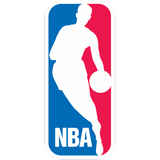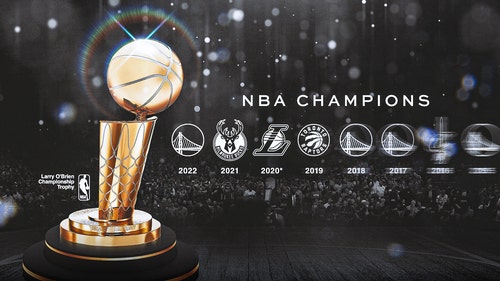
Georgios Papagiannis is slowly improving in the D-League
After some wheeling and dealing, the Sacramento Kings walked away from the 2016 NBA Draft with four first round picks. They sent the No. 8 overall pick (Marquese Chriss) to the Phoenix Suns for No. 13, No. 28, the draft rights to Bogdan Bogdanovic and a 2020 second round pick (via Detroit). They also traded guard Marco Belinelli for the No. 22 overall pick.
The orchestra of moves was genius as the Kings only moved down five draft positions to pick up two additional firsts and Bogdanovic, who was a first round pick in 2014. Sacramento ended up with Georgios Papagiannis at No. 13, Malachi Richardson at No. 22 and Skal Labissiere at No. 28 — not a bad haul for a rebuilding team with a fundamental piece already in place with superstar DeMarcus Cousins.
The real shocker of the night was the Papagiannis selection at No. 13. The Kings likely could have gotten him later in the draft, but they apparently saw something in the 19-year-old that few others did.
Read More: Nylon Calculus — Appreciating the global NBA
Fast forward to present day and their trio of first round picks have appeared in a combined total of 22 games with their lottery pick only mustering two of those. Instead of throwing the raw 7-foot-2 behemoth into the fire right away, the Kings’ brass has opted to manage his growth and development in the NBA D-League with their affiliate, the Reno Bighorns.
Papagiannis has played 15 total games in the NBADL and he’s getting acclimated to the NBA style of play, the organization’s lingo and schemes all the while honing his skills in a largely controlled environment. The Kings are able to dictate exactly what happens with Papagiannis’ growth on a day-to-day basis, which is something that would not have been afforded to them had they stashed him overseas for a year or two.
The positive is he’s steadily improving in the D-League. The negative (if we can even call if that for a 19-year-old) is it’s been slow improvement and he’s still very raw.
Papagiannis should be dominating the D-League at 7-foot-2, regardless of how raw he actually is at this stage of his career. Again, this comes with the disclaimer of him being 19 and still conforming to an American style of basketball, but nonetheless there are concerns. First — and maybe the most concerning — is he steers clear of contact. He wants nothing to do with going at defenders, and that shows in his free throw attempts (24 total attempts).
Watch below as he catches in prime post position and chooses to turn, pivot and use a fadeaway hook shot over two much smaller defenders.
He catches a beautiful entry pass and instead of powering up over P.J. Hairston — who stands a mere 6-foot-6 — he fades. That’s a trait which has improved for him as the season has played out, but he still tends to shy away from contact rather than attack it head on.
Papagiannis has a feathery soft touch for a center coming in at 7-foot-2. Notice on the following clips how adept he is at using a one-handed push shot, hook shots and even some jumpers. The flip side is he can only use his right hand around the basket. He might have caught, gathered and used a lefty layup off the glass in the above clip if he was more comfortable with his left, but it’s not a part of his game yet.
Here, he gets solid post position and Keith Benson is clearly pushing him to his weak hand. Papagiannis uses a drop step, but instead of going up, he pivots out so he can use the righty hook. He makes it, but eventually this should be a strong drop step to a dunk, strong finish off the glass or a trip to the free throw line.
While he has been limited by only using one hand around the basket, he has still been efficient. Papagiannis is averaging 12.1 points per game on the season and 8.5 of those points (70.3 percent of his production) come from in the paint. He’s converting shots less than five feet at a 60 percent clip and has only had one shot attempt blocked so far in 15 games. For all his success at the rim and his soft touch, he’s had some trouble making layups as he’s only converting 45 percent (18-of-40) of those shots. That’s not ideal, especially considering league average for layups in the NBADL is 58.1 percent.
One clear plus so far has been his ability to show off an outside jump shot, which was unexpected. While it seems like every center can now shoot from outside, this wasn’t necessarily part of his scouting report. Papagiannis is anything but a sharpshooter from outside, but the foundation is there to build upon.
Here he catches in the mid-post with Jameel Warney of the Texas Legends guarding him. He’s able to face-up and knock down the shot, showing off that feathery soft touch.
This time he walks into a 20-footer and hits it, without hesitation.
He does bring the ball relatively low in the shooting pocket before rising up for his release, but the mechanics look solid and he’s got great arc on his shots as well.
The Bighorns haven’t used him much in pick-and-pop situations, but he’s done well when he’s had mid-range opportunities (15-of-36). Even more impressive is that he’s been able to convert on 6-of-7 (extremely small sample size alert) of shots from 20-29 feet from the top of the arc, which bodes well for future use as a pick-and-pop center, à la Mehmet Okur or someone akin to him.
Not only can he hit shots from mid-range, but he’s shown an ability to step out and hit 3s as well. He’s only 3-of-4 on the season, so it’s not a focus for him but the range is present.
This 3-pointer may seem trivial but notice how he catches and shoots without hesitation. Another key is what we touched on earlier as far as his touch. The shot doesn’t go right in, but his high arcing shot and deft touch gives it the opportunity it needs to hug the rim and ultimately fall.
Clearly the best part of the clip above are the commentators — “Oh my goodness that better go!”….”Oh yes!” These are the mini joys of allowing youngsters to live by trial and error in the D-League. The Kings certainly do not want Papagiannis shooting multiple 3s a game, but the fact he doesn’t shy away from pulling the trigger is encouraging as well.
The ability to hit a jump shot is a bonus right now. Papagiannis is going to earn his money in the paint and while he’s not been very aggressive early in the season, he has an innate ability to hit these weird push shots from almost anywhere on the court. As the season goes on, it will be important for him to also work on passing out of the post. He’s tallied four assists in his 457 minutes of play this season and he’s the only player in the entire league who has played at least 450 minutes and recorded less than five assists — not really an honor he wants attached to his name.
In the above play, he catches in the post and goes to his tried and true righty hook over Johnny O’Bryant III. He does well using his body to create space, which will be important for him moving forward since he’s not a plus athlete.
In the clip above, he hits Charles Garcia with a nasty skyhook. As he continues to grow, this will be a drop step into a stronger move that could result in a basket and a free throw.
Here’s when the unorthodox shots come in. Papagiannis shines at creating shots where standard 5s would not even attempt to get a shot off. Watch below as he battles Dakari Johnson and shoots a pair of 10-foot hook shots over the outstretched hands of Johnson.
The first thing that came to my mind when I saw those shots: He’s a 7-foot-2, awkward version of Antawn Jamison!
While his offense is coming along, his defense has been his strong point so far. Papagiannis has been able to show great defensive instincts around the rim (especially on the weak side), the ability to move laterally in spurts and his positioning is slowly but surely coming along.
In this clip, he drops back in the pick-and-roll to give himself some leeway against the speedy Dejounte Murray and shows great lateral quickness to move his feet and still block the floater attempt.
Here’s yet another instance of Papagiannis moving his feet against a guard and rejecting the shot attempt:
And again as he gets switched onto wing Elijah Millsap but recovers nicely. He also shows his weak side instincts blocking Askia Booker off the glass.
In this play, he sticks to his man, Joshua Davis, making sure to stay within arms reach, before leaving to reject Darius Morris’ shot attempt out of bounds:
These are plays the 7-foot-2 teenager can eventually make at the next level.
The Kings took a big risk selecting Papagiannis in the lottery last summer. Expectations will now be attached to him as he continues to develop and hopefully become a productive member of their organization down the road. General manager Vlade Divac certainly has lofty aspirations, stating he could be an “All-Star player” down the road. Right now, it’s very difficult to see this player morphing into an NBA All-Star but the belief he can do it is important.
Papagiannis isn’t quite two years away from being two years away like Bruno Caboclo three years ago, but it’s close to that scenario. Watching the Kings’ rookie play, it’s easy to see flashes of potential but the question marks heavily outweigh the upside at this point in time.
If Reno can continue to develop Papagiannis as they have over these first three months of the season, then he should make vast strides in year one. The major component for him is to start to embrace physicality. At 7-foot-2 and 240 pounds, he has a distinct advantage over 90 percent of basketball players, but if he’s permitted to skirt around using his physical gifts, there is a very limited ceiling for him.
*All stats are from stats.nbadleague.com and are current as of Jan. 28, 2017
**The Kings organization declined comment on Papagiannis’ development thus far
More from FanSided
This article originally appeared on








